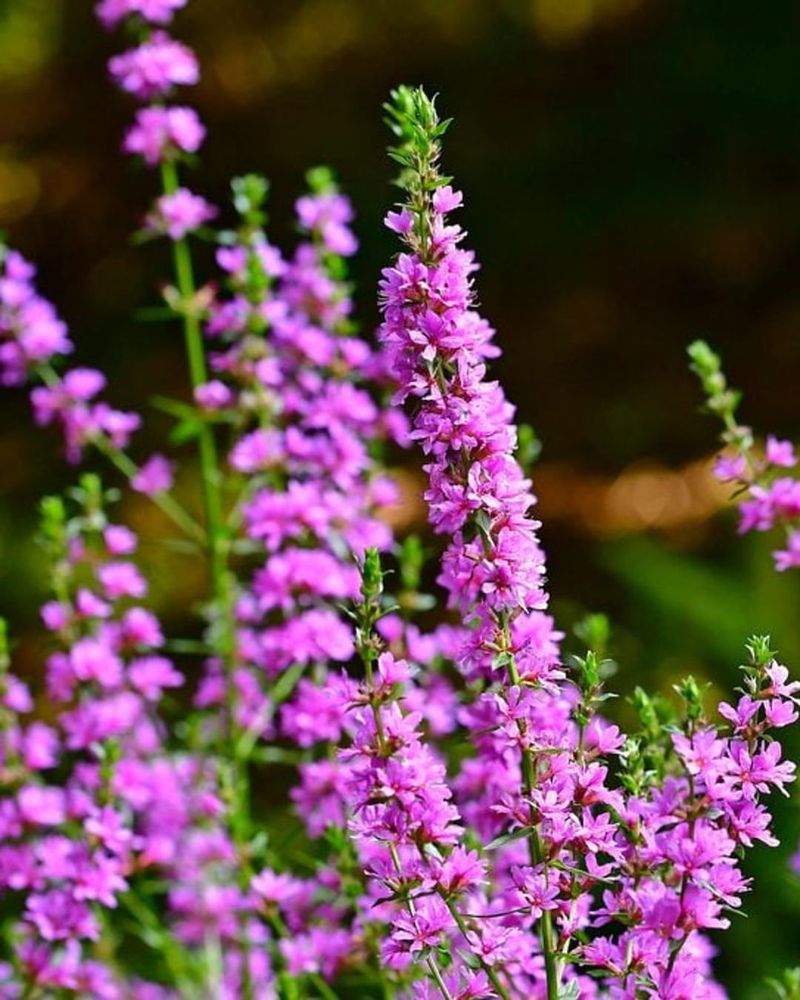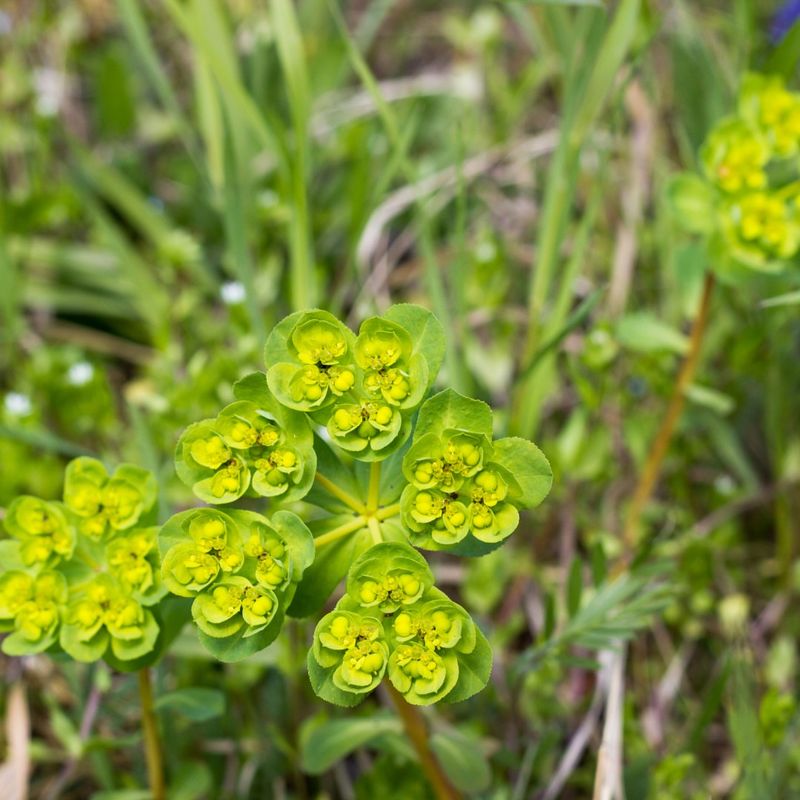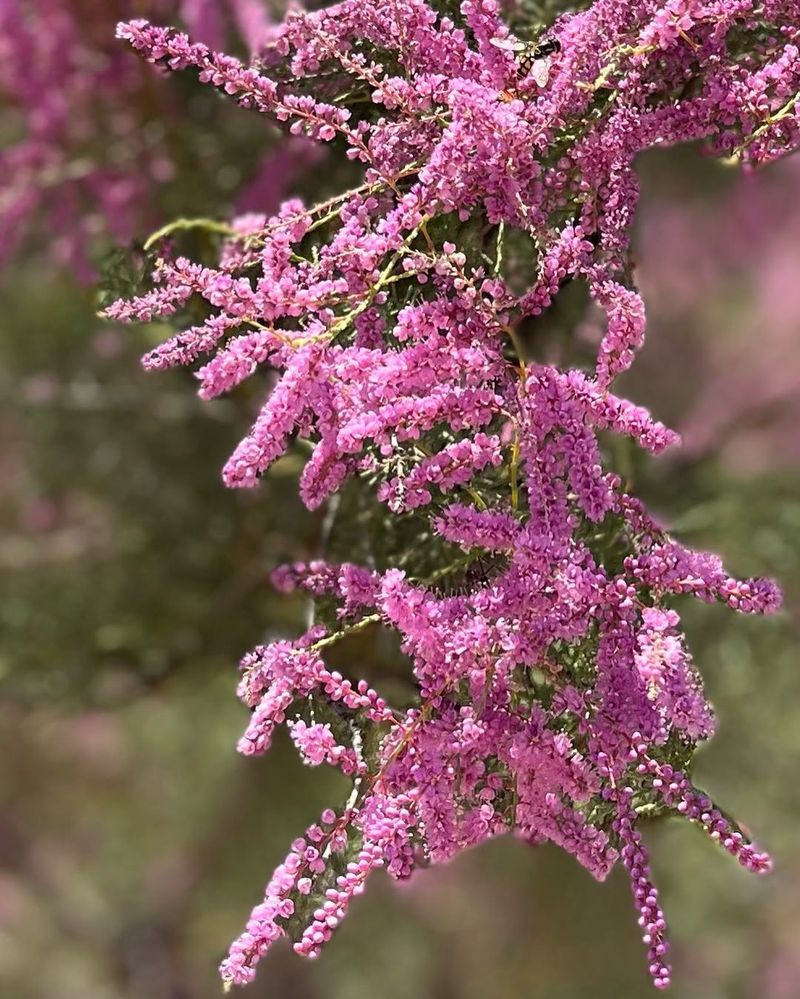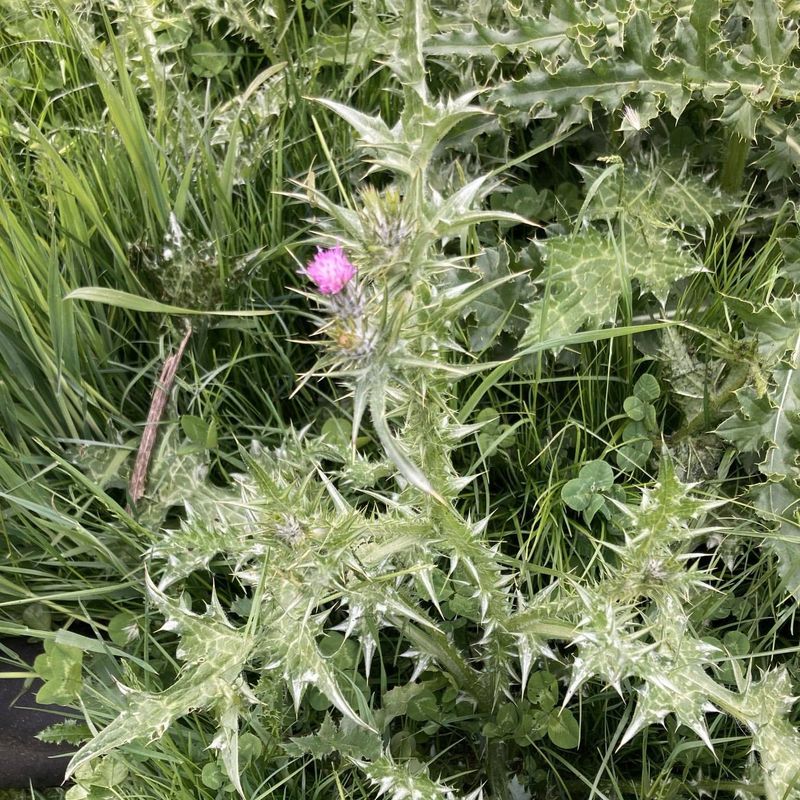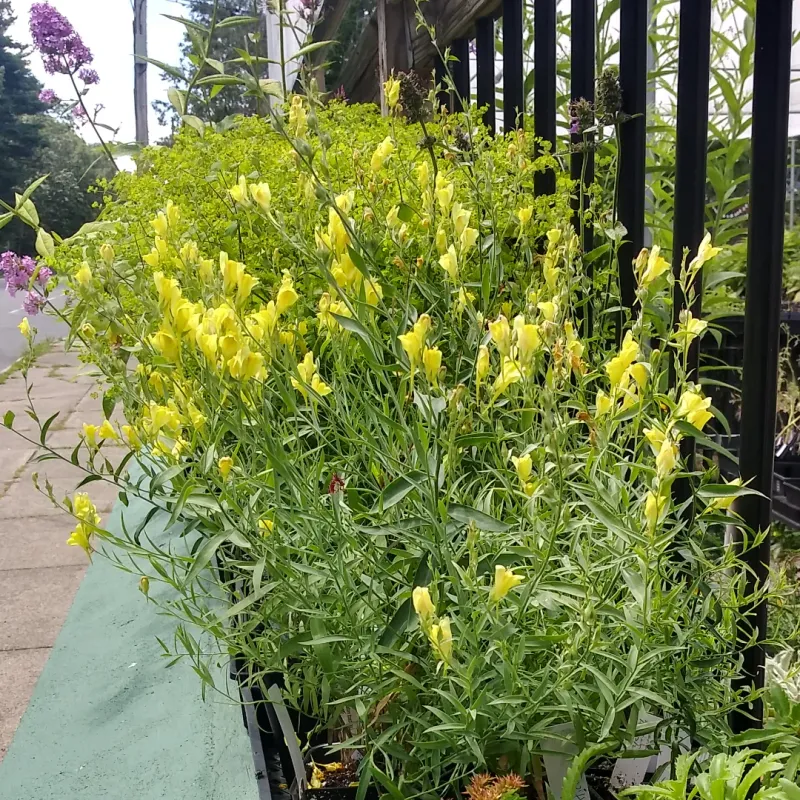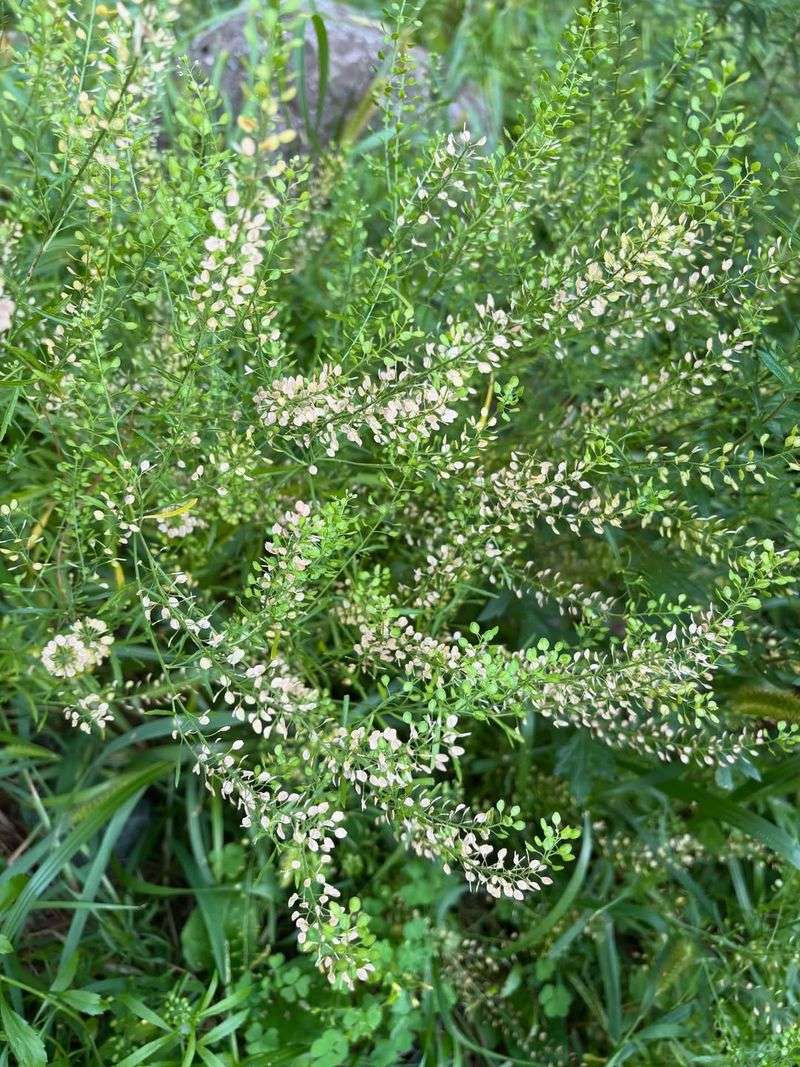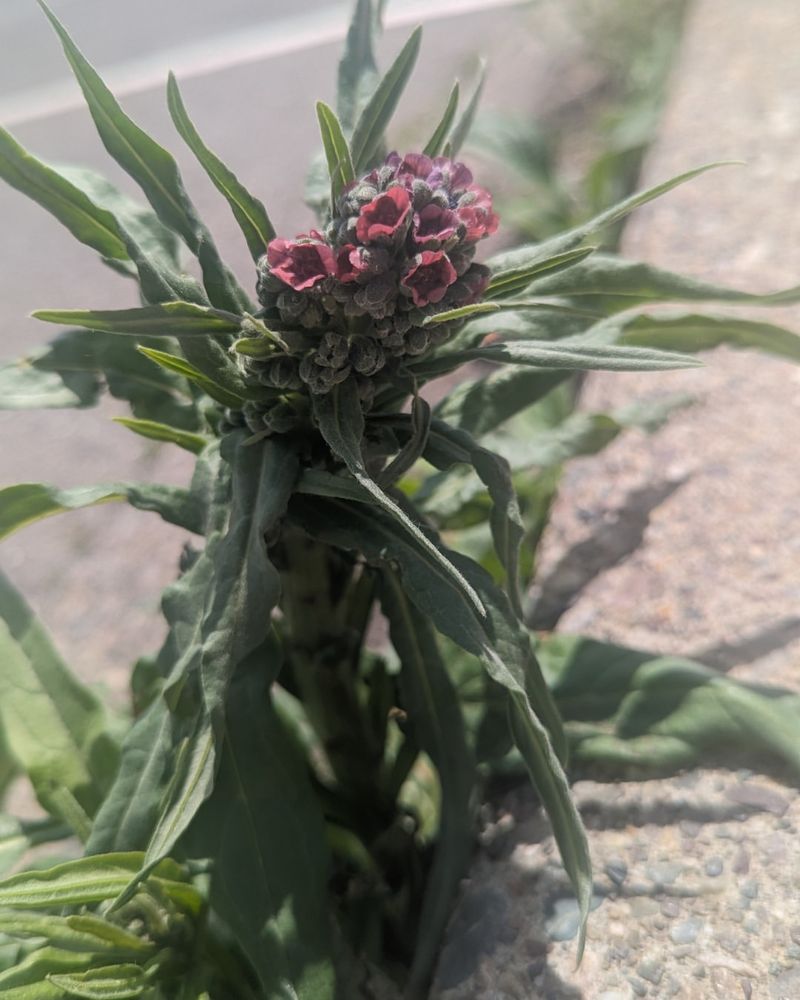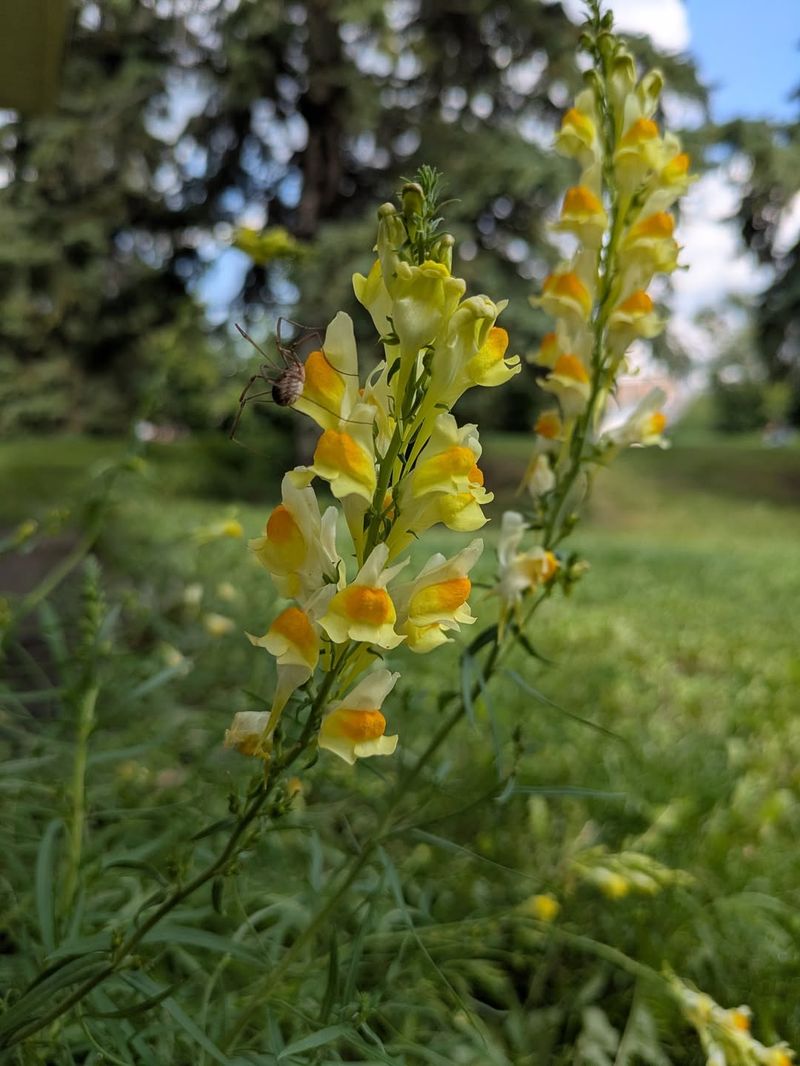Wyoming’s beautiful neighborhoods face a hidden threat that many homeowners don’t even realize. Certain plants spreading through suburban yards might look harmless, but they’re actually crowding out native species and damaging local ecosystems.
State officials are now considering bans on these troublesome invaders to protect Wyoming’s natural landscape and keep neighborhoods healthy for generations to come.
1. Purple Loosestrife
With brilliant purple spikes that tower over wetlands, purple loosestrife might catch your eye in a pretty way. Unfortunately, this European import spreads like wildfire through marshes and streams, choking out cattails and other native plants that wildlife depends on.
A single plant produces millions of seeds annually, making control nearly impossible once established. Ducks, muskrats, and fish lose critical habitat when this invader takes over. Wyoming wetlands need protection from this aggressive species that offers little value to local animals.
2. Russian Olive
Silvery leaves shimmer in the breeze, making Russian olive trees look almost magical in suburban yards. Originally planted as windbreaks and ornamentals, these trees now dominate riparian areas throughout Wyoming, forming dense thickets that crowd out cottonwoods and willows.
Birds spread the seeds far and wide, helping the invasion spread faster each year. Native trees can’t compete with Russian olive’s aggressive root system. Removing mature trees requires significant effort, but early action prevents bigger problems down the road for your neighborhood.
3. Leafy Spurge
Ranchers across Wyoming know this plant as a nightmare that refuses to quit. Leafy spurge releases a milky sap that irritates skin and poisons livestock, making grazing lands useless for cattle and sheep.
Its root system reaches depths of fifteen feet, surviving fires, herbicides, and harsh winters with ease. Once established in suburban areas, it spreads rapidly through underground roots and wind-blown seeds. Native grasses simply can’t fight back against this European invader that transforms productive land into barren patches nobody wants.
4. Tamarisk (Salt Cedar)
Did you know a single tamarisk can guzzle 200 gallons of water daily? That’s why this Middle Eastern shrub causes such devastation along Wyoming’s precious waterways, literally sucking streams dry during summer months.
Feathery pink blooms look delicate, but don’t be fooled by the pretty appearance. Tamarisk forms impenetrable thickets that destroy fish habitat and increase wildfire risk. Salt deposits from its leaves poison the soil, preventing native plants from returning even after removal efforts succeed in clearing infested areas.
5. Canada Thistle
Ironically named since it actually originated in Europe, Canada thistle has become every gardener’s worst enemy. Sharp spines make handling painful, while creeping roots spread horizontally underground, popping up new shoots everywhere you don’t want them.
Flower heads produce thousands of fluffy seeds that drift on wind currents for miles. Mowing doesn’t stop this persistent invader; it just encourages more shoots to emerge. Vegetable gardens, flower beds, and lawns all suffer when Canada thistle moves in and refuses to leave your property alone.
6. Dalmatian Toadflax
Snapdragon-like yellow blooms with orange centers make Dalmatian toadflax look like a charming garden addition. Waxy leaves and deep roots help it survive Wyoming’s harsh conditions better than most native wildflowers, giving it an unfair advantage in the competition for space.
Originally sold at nurseries as an ornamental, this Mediterranean native now infests rangelands and roadsides statewide. Seeds remain viable in soil for years, making eradication extremely challenging. Wildlife largely ignores the plant, leaving it free to spread unchecked through suburban neighborhoods.
7. Perennial Pepperweed
Starting as innocent-looking patches, perennial pepperweed quickly transforms into carpet-like infestations that smother everything underneath. White flower clusters appear harmless enough, but each plant produces thousands of seeds that germinate readily in disturbed soil around Wyoming construction sites and roadsides.
Underground rhizomes spread aggressively, forming colonies that exclude all other vegetation. Salt tolerance allows it to thrive where native plants struggle. Suburban areas with poor drainage become perfect breeding grounds for this Eurasian invader that diminishes property values and ecosystem health simultaneously.
8. Houndstongue
Fuzzy leaves and reddish flowers might seem ordinary, but houndstongue’s true menace appears later when burr-covered seeds develop. Velcro-like barbed seeds cling tenaciously to pet fur, clothing, and wildlife, hitching rides to new locations throughout your Wyoming neighborhood.
Livestock avoid grazing near infested areas because the plant contains toxic alkaloids that damage livers. Seeds remain viable for years in soil seed banks. Once established in parks or yards, houndstongue spreads relentlessly. Early removal before seed production prevents the sticky, frustrating cleanup that follows maturity.
9. Musk Thistle
Massive purple blooms nod dramatically on tall stems, earning musk thistle recognition as one of Wyoming’s most striking invasives. Beauty comes at a steep price, though, as this European native crowds out forage plants that livestock need for nutrition.
Sharp spines protect the plant from grazing animals, allowing it to reproduce freely while native plants get eaten. A single plant produces up to 120,000 seeds that remain viable for decades. Suburban lots, vacant fields, and roadsides provide perfect habitat for this troublemaker that decreases biodiversity and property appeal wherever it establishes itself.
10. Yellow Toadflax (Butter-and-Eggs)
Cheerful yellow-and-orange flowers earned this plant the nickname butter-and-eggs, but there’s nothing friendly about its behavior. Creeping roots spread horizontally underground, sending up new shoots that form dense colonies excluding native wildflowers from suburban landscapes.
Originally brought from Europe as a garden ornamental, yellow toadflax now infests disturbed areas throughout Wyoming. Seeds and root fragments both create new plants, making control doubly difficult. Pollinators largely ignore the flowers, providing no ecological benefit. Homeowners discover too late that this pretty invader becomes an expensive, time-consuming problem requiring professional removal.


